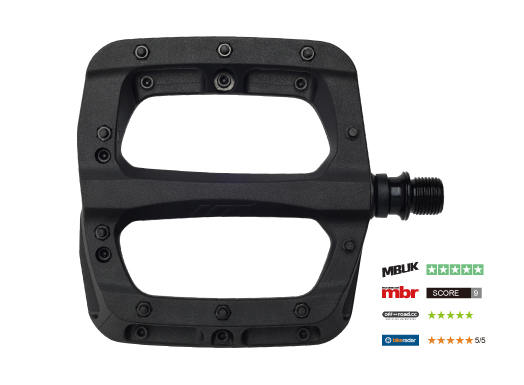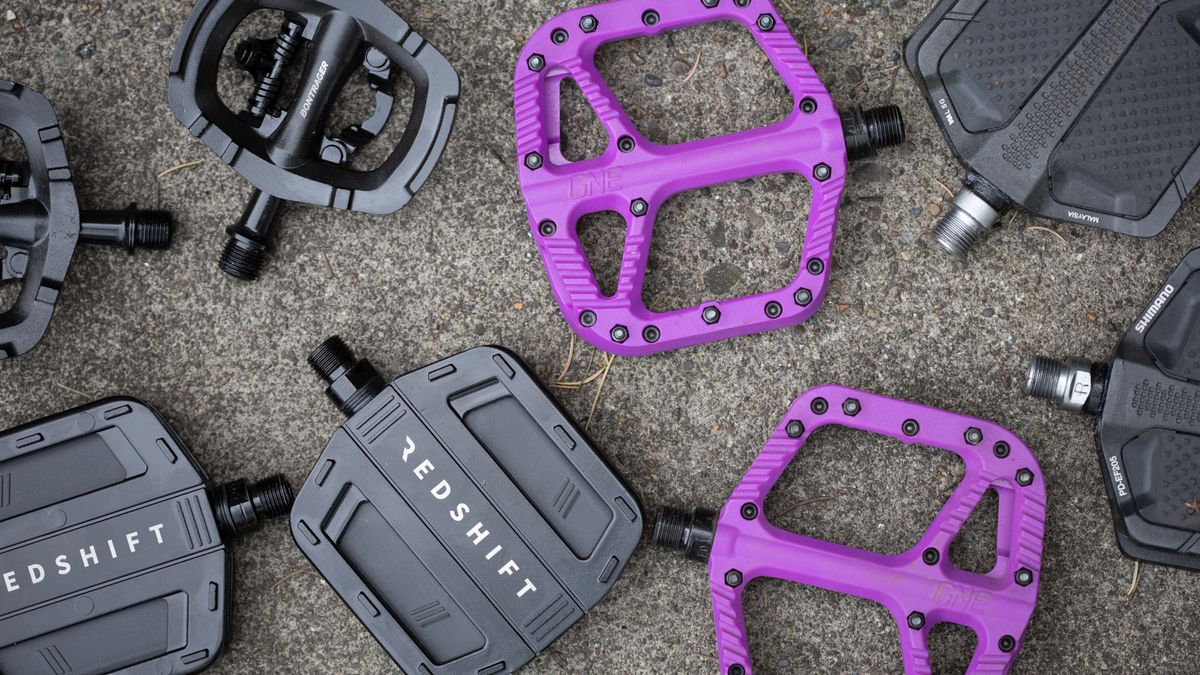The Advantages of Flat Pedals for Road Biking
Flat pedals have long been a popular choice for mountain bikers, but their benefits are increasingly being recognized in the road biking community. Road bike flat pedals offer several advantages over clipless pedals, making them an attractive option for cyclists of all levels. By choosing high-quality flat pedals, riders can experience improved pedaling efficiency, enhanced bike control, and reduced fatigue, ultimately contributing to a more enjoyable and safer riding experience.
How to Choose the Right Road Bike Flat Pedals
Selecting the ideal flat pedals for your road bike involves considering several factors to ensure a comfortable and efficient riding experience. First, evaluate the materials used in the pedals, as durability, weight, and maintenance requirements can vary significantly. Aluminum, plastic, and composite materials all have unique advantages and disadvantages. For instance, aluminum pedals tend to be durable and lightweight, while composite pedals may offer a more affordable option with good durability.
Additionally, consider the platform size and pin design of the pedals. Larger platforms can provide better grip and support, while strategically placed pins can enhance traction and reduce foot fatigue. Popular road bike flat pedal brands and models, such as MKS Rinko or Wellgo WPD-E001, often incorporate these features to cater to riders seeking optimal grip and comfort.
Materials and Construction: A Closer Look
The materials and construction of road bike flat pedals significantly impact their durability, weight, and maintenance requirements. Aluminum, plastic, and composite materials are commonly used in flat pedals, each with unique advantages and disadvantages. Aluminum pedals, for example, are known for their durability and lightweight properties, making them a popular choice among cyclists. However, they may require more frequent maintenance to keep them in top condition.
On the other hand, plastic pedals tend to be more affordable and lightweight, although they might not offer the same level of durability as aluminum or composite pedals. Composite pedals, meanwhile, can provide a balance between affordability, weight, and durability, making them an attractive option for many riders. When evaluating materials, consider factors such as your budget, riding style, and the typical conditions in which you’ll be using your pedals.
Platform Size and Pin Design: Maximizing Grip and Comfort
The platform size and pin design of road bike flat pedals play a crucial role in enhancing grip and comfort during rides. Larger platforms generally provide better support and stability, allowing for improved pedaling efficiency and reduced foot fatigue. Moreover, strategically placed pins can significantly boost traction, ensuring a secure and comfortable connection between the shoe and the pedal.
When selecting flat pedals, consider the platform size that best suits your riding style and foot size. For instance, riders with larger feet may prefer pedals with a more extensive platform to ensure adequate support and grip. Additionally, pin design can vary between models, with some pedals featuring adjustable pins that allow for customization based on personal preference and riding conditions.
Maintenance and Care: Keeping Your Flat Pedals in Top Condition
Proper maintenance and care are essential for ensuring the longevity and optimal performance of your road bike flat pedals. Regular cleaning, lubrication, and adjustment can significantly contribute to a safer and more enjoyable riding experience. To maintain your flat pedals, follow these tips and tricks:
- Cleaning: Use a soft brush and mild detergent to remove dirt and debris from the pedals. Rinelyour pedals after cleaning to prevent corrosion and ensure a smooth finish.
- Lubrication: Apply a light oil or grease to the pedal bearings and spindles to reduce friction and wear. Be cautious not to over-lubricate, as excess oil can attract dirt and grime.
- Adjustment: Periodically check the pin tension and platform alignment to ensure optimal grip and comfort. Tighten or loosen pins as needed, and realign the platform if necessary.
By incorporating these maintenance practices into your routine, you can help preserve the quality and functionality of your road bike flat pedals, ultimately enhancing your overall riding experience.
Flat Pedals vs. Clipless Pedals: A Comparative Analysis
When it comes to road biking, cyclists often face the decision of choosing between flat pedals and clipless pedals. Both options have their unique advantages and disadvantages, and the choice ultimately depends on individual preferences, riding styles, and skill levels. Here’s a comparative analysis of flat pedals and clipless pedals for road biking:
Flat Pedals
- Ease of use: Flat pedals are user-friendly and require no special shoes or techniques to get started.
- Versatility: They can be used with any type of shoe, making them suitable for various riding scenarios and conditions.
- Bike control: Flat pedals allow for greater freedom of movement and enable riders to easily adjust their foot position during rides.
- Safety: In the event of a crash or sudden stop, it’s easier to disengage from flat pedals, reducing the risk of injury.
Clipless Pedals
- Efficiency: Clipless pedals can provide improved pedaling efficiency by allowing riders to pull up on the pedals during the upstroke, in addition to pushing down.
- Power transfer: A secure connection between the shoe and pedal can lead to better power transfer and acceleration.
- Skill development: Clipless pedals may help advanced riders develop and maintain a consistent pedaling technique.
Ultimately, the decision between flat pedals and clipless pedals for road biking comes down to personal preference and individual needs. Riders should consider factors such as their skill level, riding style, and comfort when making this choice.
Flat Pedals in Competitive Cycling: A Growing Trend
Flat pedals have gained popularity in competitive cycling, including road and cyclocross races, as riders discover their benefits and versatility. Notable professional cyclists have begun using flat pedals in races, citing various reasons for their preference.
One of the primary advantages of flat pedals in competitive cycling is the enhanced bike control they offer. Riders can quickly adjust their foot position during races, allowing for greater maneuverability and responsiveness to changing course conditions. Additionally, flat pedals enable riders to easily detach their feet from the bike in the event of a crash or unexpected obstacle, potentially reducing the risk of injury.
Some professional cyclists also appreciate the simplicity and ease of use that flat pedals provide. With no need for special shoes or cleat adjustments, riders can focus on their performance and strategy without worrying about equipment-related issues. Furthermore, the ability to use regular athletic shoes with flat pedals can be beneficial in situations where shoe changes are necessary during races or events.
Among the professional cyclists who have embraced flat pedals are those who find them more comfortable and less fatiguing than clipless pedals. By allowing for a more natural foot position and movement, flat pedals can help reduce foot and leg strain, enabling riders to maintain their energy and focus throughout races.
In conclusion, the growing trend of using flat pedals in competitive cycling highlights their versatility and inclusivity. Riders of all levels and styles can benefit from the enhanced bike control, simplicity, and comfort that flat pedals provide, making them a valuable option for road and cyclocross races.
Conclusion: Embracing the Versatility of Flat Pedals
In summary, road bike flat pedals offer numerous advantages for cyclists of all levels and styles. By choosing high-quality flat pedals, riders can experience improved pedaling efficiency, enhanced bike control, and reduced fatigue, ultimately contributing to a more enjoyable and safer riding experience. When selecting flat pedals, consider essential factors such as material, platform size, pin design, and grip to ensure the best possible fit and performance.
Flat pedals have gained popularity in competitive cycling, including road and cyclocross races, as riders recognize their benefits and versatility. Notable professional cyclists have begun using flat pedals in races, citing advantages such as enhanced bike control, simplicity, and comfort. This growing trend highlights the inclusivity and potential of flat pedals for various riding scenarios and skill levels.
As you explore the world of road bike flat pedals, remember to prioritize proper maintenance and care. Regular cleaning, lubrication, and adjustment can significantly extend the lifespan and performance of your pedals. By investing time and effort in maintaining your flat pedals, you’ll ensure a safer, more enjoyable, and more efficient riding experience for years to come.
In conclusion, road bike flat pedals are a versatile and inclusive option for cyclists. By understanding their advantages, considering essential factors when selecting pedals, and committing to proper maintenance, riders can experience the numerous benefits that high-quality flat pedals have to offer.








